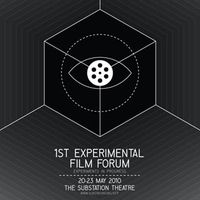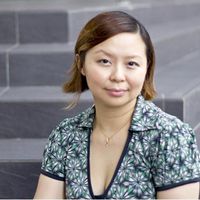Asia Europe Film | Exploring experimental cinema
“Commanding, demanding, irritating and seducing in turns” says film scholar and curator Patricia Zimmerman when describing the pleasures and challenges of making and showing that genre of films termed experimental. She was speaking at the Discussion Forum - Trends in Experimental Cinema hosted as part of the First Experimental Film Forum at The Substation, Singapore, on 22 May 2010.The Forum brought together film makers, film programmers, curators, critics and distributors including Tulapop Sanjaroen (Thailand), Matthias Ortman (Germany), Silke Schmickl (France), Patricia Zimmerman (USA), Victric Thng and Tania Sng (both from Singapore) to explore experimental film making in the South-east Asian region.
[gallery link="file" columns="2"]
The politics of definition
Although, the Forum did not aim to define experimental cinema, issues of definition were inescapable. Panellists agreed that definitions may serve as handy tools and on the need to set boundaries. However, they were also unanimous in their excitement in belonging to a genre which definition was still being debated. They acknowledged that a forum to discuss issues and trends in the field was both timely and relevant.
The attempt to locate experimental cinema in the wider landscape of the film genre began with recognising that there is more than one way of film making. Film maker and curator Victric Thng spoke of experimental cinema as “film making by accident”, “a stitching together of random images and voices.” While for film maker Tania Sng, the experimental mode was more akin to a raw poetic language, such as the one she employed to explore the beauty industry in No Woman, No Love, No One, No Home (1998). The dialogue threw up certain distinguishing characteristics of experimental cinema such as the absence of narrative; the lack of continuity of space or time; and the disjunction between visuals and sound.
Blatant disregard for narrative
The blatant disregard by experimental film makers of mainstream cinema’s customary desire for narrative was explored in some depth. The approach of experimental cinema, they agreed, was almost always conceptual. In When the Movie Listens (2007), for example, Tulalop Sanjaroen inverts the norm by inviting audiences to speak to the film. In Malaysian-Canadian film maker Chris Chong’s Block B (2008), a residential building becomes a living painting, where the concrete homes and contrasting soundscapes frame the lives of the expatriate Indian community in Malaysia.
For programmer and critic Matthias Ortman, the formulaic approach is inverted by the replacement of the narrative with a question. In experimental cinema, he said, “you ask a question and then apply film techniques to it.” The Substation’s Programme Manager for film, Beng Kheng Low wondered whether engagement with pressing social issues such as human rights set the experimental genre apart and cited Apichatpong Weerasethakul’s Mobile Men (2008), which was part of a project marking the 60th anniversary of the Universal Declaration of Human Rights.
The subjectivity of time
The intense subjectivity of time in the experimental film also drew attention. Sng shared her golden rule for deciding the length of her films: “do I have enough to create a reaction?” A concern, however, was the emerging stereotype of the slow and lengthy experimental film, increasingly regarded as “the only way to get into the film festival circuit”.
Breaking film school rules
Techniques in experimental cinema that often break film school rules also came up for discussion. Here American film maker Stan Brakhage, one of the most important figures in 20th century experimental cinema comes to mind. His application of scratches and paint directly onto the film surface to approximate closed-eye vision reflects the experimentation typical of the genre. Zimmerman cited examples from the films screened at the Forum. In Mobile Men, the camera stays fixed while the action unfolds in front of it. In Block B and Emily Richardson’s Cobra Mist (2008), we witness the revival of the tableau shot, which references early cinema. Long takes with extreme conceptual shots are not uncommon. Such shots, Zimmerman argued, were antagonistic reactions to the fast cuts of avid editing characteristic of adrenalin-pumping action movies from mainstream Hollywood cinema.
Works that migrate
It was acknowledged that experimental films are progressively becoming “works that migrate”. If they were installations by day, they had shape shifted into club remixes by nightfall. Increasingly, experimental films were also being seen in ambient media. As a result, they are moving beyond the regular gallery and museum circuit into places where real people interact. Thus, the old idea of the film as a ‘unique object’ travelling to festivals was being gradually replaced by art that regularly infiltrated life.
Only for a happy few?
Predictably, there is no easy reaction to such cinema. Audiences have been known to make their displeasure evident by walking out of screenings midway. In this context, Silke Schmickl’s all-important question as curator and distributor was: “can mainstream audiences be attracted to experimental cinema or is it only for a happy few?” While film makers agreed that unsettling viewers was part of their craft, they also acknowledged the need to reach out to new audiences.
The reality is that few arts spaces or cinemas show these works as part of their regular programming. Hence, the greatest challenge for the film programmer is not so much about finding great works as it is about finding a regular, appreciative audience. The role of the curator, as Zimmerman highlighted, is to build a community of audiences and film makers and foster dialogue between the two. Towards this end, curators have been adopting innovative ways of presenting experimental cinema. Schmickl works with themes and regions (such as avant-garde film and video art from India) as ways of presentation through Lowave, the independent film label that she co-founded in 2002.
Other suggestions included the presentation of experimental shorts before feature film screenings and integrated programming comprising of workshops, films and forums – a model attempted at the First Experimental Film Forum.
Thng has the last words. “Making a film is like making a good cup of coffee”, he explained. “It may have a good or bad aftertaste. If a film stays with me in some way for a day, a week, forever, that’s how I judge whether it was good or bad.”
The Forum, Trends in Experimental Cinema, was supported by the Asia-Europe Foundation through the Asia-Europe Cultural Partnership Initiative: Film. It was presented by the Moving Images Film Programme of The Substation, Singapore.
Anupama Sekhar is Project Manager for Cultural Exchange at the Asia-Europe Foundation. She is the co-editor of “Mapping Cultural Diversity: Good Practices from Around the Globe”, which includes profiles of innovative film programmes and policies from Germany, India, Peru, Spain and Singapore.
Similar content
By Ramona David
23 Feb 2011
from - to
20 May 2010 - 05 Sep 2010
By Kerrine Goh
03 Jun 2005
By Kerrine Goh
05 Nov 2004
from - to
11 Jun 2011 - 27 Jul 2011


